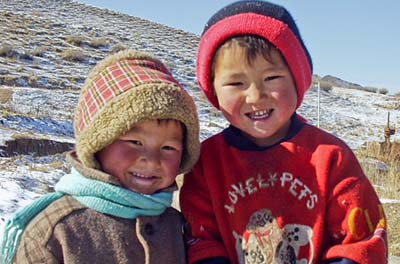Building successful microfinance in rural areas in the Kyrgyz Republic

Key Contact
Charles Undeland
Start Date
End Date
Funding Amount
$ 38,268
Knowledge-providing Countries
Knowledge-receiving Countries
Summary
Up to 60 percent of rural households in the Kyrgyz Republic live in poverty, including 19 percent in extreme poverty. Rural households spend 74 percent of their incomes on food. At the same time, the Kyrgyz Republic had experienced some of the most severe food price shocks in Central Asia. Food prices increased 48 percent during the global food price crisis of 2007-2008, and between 20 percent and 85 percent from July through December 2010.
The high cost of borrowing, over-regulation, and political interference had substantially weakened the country’s financial sector and rendered it incapable of lending in most rural areas. Microfinance Institutions (MFIs) are critical for providing credit, especially in rural areas where 65 percent of the population, and an even higher percentage of the poor, reside. The country had recently seen impressive growth in MFIs. However, these institutions needed to develop their financial services to better serve the poor.
To learn how to successfully incorporate an MFI model with a conscious social development agenda, officials from the Kyrgyz Government turned to BRAC and Grameen Bank in Bangladesh for help, and asked the World Bank to facilitate a knowledge exchange. Fifteen participants from the Kyrgyz Republic traveled to Bangladesh. Former President Otunbaeva led the delegation, which also included representatives from various MFIs, the President's Administration, the Prime Minister's Office, the National Bank, and the National Credit Union.
Prior to the trip, delegation members attended three orientation sessions in Kyrgyzstan. The six-day exchange in Bangladesh included workshops, meetings, and multiple field visits. The team then returned to Kyrgyzstan, disseminated a video and printed materials via the Association of MFIs, and organized a roundtable discussion in Parliament.
The knowledge exchange went extremely well, providing the Kyrgyz MFI representatives with substantial new approaches. Reflecting on this experience, the former Kyrgyz President noted, “The trip was a success. It was an eye-opening experience for all of our delegation and provided practical comparative experience that can be applied in the Kyrgyz Republic. I am quite confident that on the basis of what they have seen, our microfinance companies plan to launch new products, as well as build linkages to other social programs through their microfinance operations. The experience is already having an impact on formulating a law to amend our country’s Law on Microfinance and Microfinance Organizations.”
Beneficiaries / Participants
Over 65 percent of the Kyrgyz population, and an even higher percentage of the poor, reside in rural areas. Up to 60 percent of rural households live in poverty, including 19 percent in extreme poverty.
The high cost of borrowing, poor implementation of regulations, and even inappropriate regulations had undermined the development of the Kyrgyz Republic’s financial sector, particularly in rural areas. At the same time, the country had seen impressive growth in microfinance institutions (MFIs). However, these institutions needed to develop their financial services further to better serve the rural poor.
Recognizing this problem, the Kyrgyz Government approached the World Bank to help identify countries that had successfully embraced an MFI model that, while adopting a conscious social development agenda, was also able to produce successful commercial enterprises. A Bank team identified Bangladesh as a good example, and arranged a visit.

 China
China Colombia
Colombia Denmark
Denmark India
India Indonesia
Indonesia Mexico
Mexico Russian Federation
Russian Federation Spain
Spain United Kingdom
United Kingdom